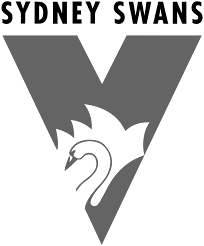Accessory Navicular Removal
What Is Accessory Navicular Removal?
Accessory Navicular removal is the surgery performed to remove the Accessory Navicular bone. The Kidner procedure is the most common procedure performed for the removal of this bone.
It is considered as an option only when non-operative conservative treatment techniques have yielded unsatisfactory results in providing sufficient pain relief.
The outcome of this procedure is generally good.
What Conditions Does Accessory Navicular Removal Help?
Accessory Navicular removal is required in cases of Accessory Navicular syndrome.
Why Is Accessory Navicular Removal Required?
This procedure is required when the inflammation and pain caused by the Accessory Navicular bone is unresponsive to conservative treatment options, thus requiring surgical intervention to provide relief to the patient.
Who Is Accessory Navicular Removal Suitable For?
Accessory Navicular removal surgery is suitable for most individuals.
However, people who are suffering from a lung or a heart condition or chronic disease such as diabetes are evaluated on a case by case basis before being considered eligible for this procedure.
Treatment Process
Preparation for Surgery
- Requires preoperative medical evaluation consisting of a complete patient history and physical examination to determine suitability for the procedure, which may also include lab tests and X-Ray imaging.
- The surgeon also determines between the different surgical procedure options on a case by case basis, based on the severity of the bursa formation, patient’s health and lifestyle.
- Adequate counsel is needed to ensure that the informed consent obtained is fully understood.
- Use of any anti-inflammatory medications (NSAIDs) should be stopped at least seven days before the procedure.
Day of Surgery
- Report any infections to me prior to surgery as the procedure cannot be performed until all infections have cleared up.
- Do not consume alcohol - 24 hours prior to treatment,
- Do not eat or drink anything, including water, for 6 hours before surgery
- Avoid vigorous physical activity or exercise 24 hours prior to surgery,
- Procedure options include:
- The Kidner procedure where the posterior tibialis tendon is detached and reattached, or
- Modified Kidner procedure where the posterior tibialis tendon is not detached.
During Surgery
- Administration of general anesthesia
- The entire procedure can take two to three hours
- Procedure is performed and sent to recovery room, for observation
- Making the individual comfortable in the surgical suite
- Identification of the proper limb and joint and surgical draping
- Administration of general anesthesia
- Surgical incision over the Accessory Navicular bone
- Complete removal of the Accessory Navicular bone
- Reattachment of the tibial tendon
- Closing the incision with stitches, and recovery from the anesthesia
- Pain medications are prescribed to help with pain during the recovery phase
After Surgery
- Immediately after the procedure, the patient is moved to the recovery room, where he is kept under observation until they regain consciousness where general anesthesia is used.
- Pain medications are prescribed to help with pain during the recovery phase.
- Do not consume large amounts of alcohol after surgery,
- Avoid vigorous physical activity or exercise until advised,
- Follow the Post Surgery Treatment Plan proscribed by the surgeon and post op care specialists.
- Any questions or complications should be communicated directly to the surgeon
Common Questions
If you have a specific question about your treatment, we recommend contacting the practice.










